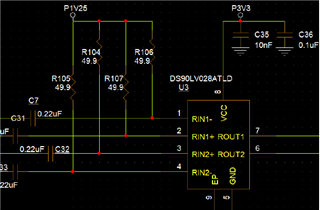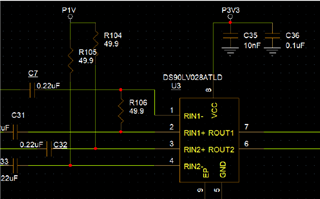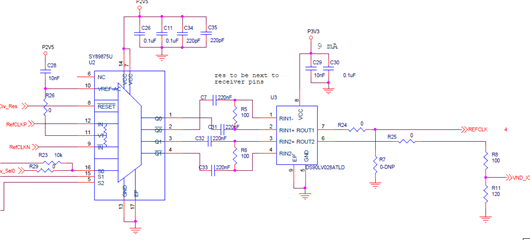Other Parts Discussed in Thread: SN74AXC1T45, DS90LV027A-28AEVM
Hello,
I am using the DS90LV028A to input an LVDS signal coming from a multiplexer and output a CMOS signal to other chips.
I need Rout1 as a 3V CMOS signal and Rout2 as a 1.8V CMOS signal which mandates me to add a voltage divider at the output to divide it to 1.8V on the second output.
My input voltage to the chip is 3.3V (3.21V to be accurate).
The inputs to the chip are biased to 1.25V with 50 ohm resistors.
In the picture you can find the configuration I am using . I also tried biasing with 1V instead of 1.25V.
With both inputs terminated the same (biased to 1.25V), the output never reaches 3V and sometimes, it ranges from 900mV to 2.9V and other times, it ranges 0V to 2.9V.
the AC coupled inputs are all of the same amplitude and have the same characteristics.
I would highly appreciate if you can help clarify how the circuit works and what the outputs should be when specific inputs are connected.
I am using it in many of the boards we are working on and none of them is actually providing a stable behavior.
Please correct me if you think there is anything wrong with the circuit. Also keep in mind that I am not using the configurations below together however here i am just depicting the different scenarios i tried.
Best regards,
Christelle Saliba



